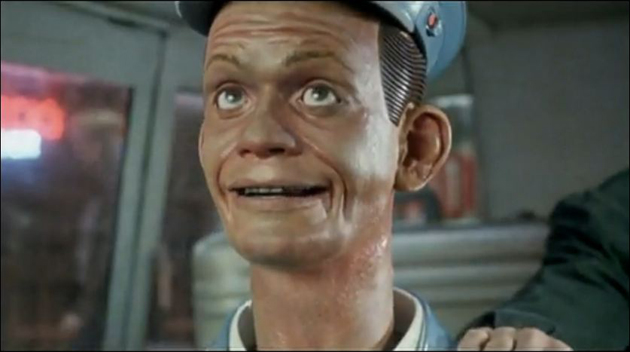 NEWS
NEWS
 NEWS
NEWS
 NEWS
NEWS
With the news of Uber Technologies Inc. about to put self-driving cars on the streets of Pittsburgh, we are already hearing wolf-whistles heralding a fantasy-esque near future in which redundant humans in the making parade around town chauffeured by a robot.
On the back of Uber’s announcement tech pundits are now talking about the “endgame,” the telos of tech wherein humans will no longer be hired to drive drunks home at night. Apparently, Uber’s present human drivers are already uncertain about their job prospects.
And it will happen, but not for some time. Tech-augmented self-driving cars (a human is also at the wheel), such as the aforementioned Uber vehicles, are very different from cars that drive themselves. Ford Motor Co. just told us that its “revolutionary” cars will be fully autonomous come 2021 – getting into the taxi business prior to selling to consumers – while at the same time BMW with partner Intel Corp. also gave 2021 as the year their vision of fully self-driving cars will become a reality.
Five years is a long time in the tech milieu, anything can happen, almost. But at the moment, what solid proof do we have that anyone can do any better than, say, Tesla, whose self-driving vehicle was the cause of a man’s death this year? Tesla’s CEO Elon Musk has accepted that “the software is very new” and has asked humans to keep their hands on the wheel while in one of his cars.
In an interview following Uber’s announcement, CEO Travis Kalanick told Business insider that Uber was presently “catching up” to other tech outfits whose hopes are also set on a future in which pollution is significantly reduced and “trillions of hours are given back to the people” thanks to fleets of something similar to a Johnny cab – the robot taxi from the movie Total Recall.
“I could give you self-driving nirvana if it’s in the desert, there’s no oncoming traffic and there are no pedestrians,” said Kalanick, adding that the one thing holding fully self-driving cars back is the “state of technology.”
Now, that’s a pretty big thing.
Kalanick also tells us that in terms of autonomous car tech there are “literally things that haven’t been invented yet.” When asked to give a time-frame, the start of the endgame, Kalanick refuses to give the interviewer a date. For good reason: He doesn’t know. No one knows the year a robotaxi will be safely taking you out for the night.
Another thing, recently brought up on the UberPeople forum, is that by creating self-driving cars, wouldn’t Uber be committing business harakiri? You order a ride, get a taxi, because you don’t want to drive, can’t drive or it wouldn’t be safe or legal to drive. This would essentially make Uber in its present form surplus to requirements if you can have your own self-driving car. Uber could be betting on augmentation rather than autonomy, for the time being at least.
Kalanick also tells us that at the point when the endgame comes, there will still be “places that autonomous cars are just not going to be able to go or conditions they’re not going to be able to handle.”
The endgame suddenly sounds a little farther away, encumbered by the limitations of technology. It will surely come, but Uber drivers can rest assured their jobs are safe for sometime yet.
Support our mission to keep content open and free by engaging with theCUBE community. Join theCUBE’s Alumni Trust Network, where technology leaders connect, share intelligence and create opportunities.
Founded by tech visionaries John Furrier and Dave Vellante, SiliconANGLE Media has built a dynamic ecosystem of industry-leading digital media brands that reach 15+ million elite tech professionals. Our new proprietary theCUBE AI Video Cloud is breaking ground in audience interaction, leveraging theCUBEai.com neural network to help technology companies make data-driven decisions and stay at the forefront of industry conversations.